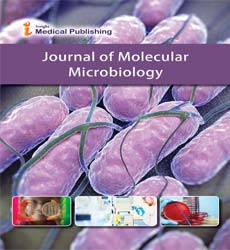Prevalence, risk factors and antibiotic resistance of staphylococcus aureus and MRSA nasal carriage among healthy population in ibadan, Nigeria.
Abstract
Background: Nasal carriage of Community-Acquired Methicillin-resistance Staphylococcus aureus (CA-MRSA) is recognized for its rapid community spread and tendency to cause various infections especially in communities with a large population where personal hygiene is poor. We sought to investigate the prevalence and evaluated the possible risk factors of CA-MRSA among the healthy population.
Methods: Nasal swabs collected from 392 males and 308 females using the multi-stage sampling technique were cultured for Staphylococcus aureus. Isolates were identified by conventional biochemical tests, Microbact™ 12S identification kit and confirmed with 16SrRNA. Antibiotic susceptibility testing was performed using the Kirby-Bauer disc diffusion technique. Finally, isolates were further investigated for methicillin resistance by using the cefoxitin disk diffusion test followed by polymerase chain reaction amplification of MecA and Nuc genes. Proportions were tested using Chi-Square and Fisher’s Exact Probability Test in Epi InfoTM.
Results: The results showed 31.9% and 9.4% prevalence of S. aureus nasal carriage and Methicillin-resistance Staphylococcus aureus respectively. Low educational background (Ï°2 =36.817, P Ë‚ .001), age >40-50 years (Ï°2 = 8.849, P = .003), recent antibiotics use (Ï°2 = 7.556, P = .006), recent hospital visitation (Ï°2 = 8.693, P = .003) and male gender (Ï°2 = 9.842, P = .002) are significantly associated with CA-MRSA. The results of this research study show that CA-MRSA are highly multi-drug resistant.
Conclusion: The study established a high prevalence and resistance burden of CA-MRSA in the population; this poses a serious public health concern in the region and necessitates the demands for continuous surveillance on the colonization state of CA-MRSA to restrict the transmission of the bacterium in the community.
Open Access Journals
- Aquaculture & Veterinary Science
- Chemistry & Chemical Sciences
- Clinical Sciences
- Engineering
- General Science
- Genetics & Molecular Biology
- Health Care & Nursing
- Immunology & Microbiology
- Materials Science
- Mathematics & Physics
- Medical Sciences
- Neurology & Psychiatry
- Oncology & Cancer Science
- Pharmaceutical Sciences
